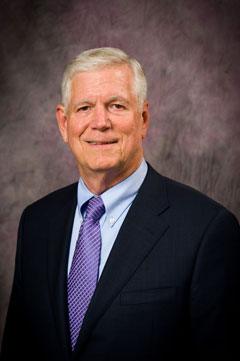February 20, 2018
Budget model redesign update

Dear faculty and staff,
In a November letter to campus, I announced work was beginning on a major strategic priority for our university — modernizing our historic budget model. I want to update you on some of the work that has taken place since November and share an extended project timeline.
Initial work on the new budget model began prior to winter break with meetings of the Core Executive Team and Steering Committee. Early this year, shortly after coming back from the holidays, seven Institutional Cost Pool Teams were appointed and went to work. Sign in with your eID and password to view the Institutional Cost Pool Teams.
We also refined our goals for a new model to be:
- Encourage enrollment growth
- Energize innovation
- Incentivize and align with 2025 plans
- Provide greater financial accountability
- Preserve K-State's land-grant mission
- Unlock the historical incremental budget
- Provide greater transparency
As we move away from a centralized incremental budget model, we are moving toward a hybrid Responsibility Centered Management, or RCM, model. In an RCM budget model, revenue-generating units own the revenue they generate and are also responsible for the costs they incur.
As we move to a more decentralized model, our work in the coming months will focus on creating a revenue-centered budgeting process that fits K-State. No two university budget models are alike. We will be determining where on the continuum between a fully centralized and fully decentralized budget process our new model should fall.
One key to establishing an RCM model is determining institutional cost pools and the drivers to use for allocating costs to institutional cost pools. The institutional cost pools are:
- Library
- Academic administration
- General administration
- Research support
- Utilities and facilities services
- Student services
- Information technology
These cost pools may be combined into fewer pools as we continue to design the model. The seven cost pool teams are charged to recommend the cost drivers for distributing institutional costs and to identify additional questions, issues, policies, and procedures that we need to consider as cost allocation formulas are defined. I thank the team members for their willingness to undertake this important work this spring.
We are in the discovery phase of our redesign effort, already learning from the experiences of other universities. Some members of the Steering Committee recently visited Iowa State University with several more visits planned in the coming weeks to gather information about what worked well and what lessons we can learn from others who have been through this type of change.
It has become clear that designing and implementing a new model for next fiscal year is not realistic. Our focus needs to be on building a strategic budget model for K-State's future, not for next year's budget. There are many questions that will need to be answered as we undertake this complex effort. We need to work together to lay a strong foundation for such a major change and take the time to do it well. For that reason, we have revised the project timeline. We plan to have the budget model redesign completed by July 2018 and will run a learning year during FY 19, with implementation in FY 20. This will allow us to understand the impacts of the new model and adjust as necessary prior to full implementation.
Vice President Dorhout also has been exploring a change in the Facilities and Administrative costs allocation process. Several questions have been raised as to how that effort integrates with the budget modernization effort. We need to better understand that impact. I have asked Dr. Dorhout to run a learning year as well in FY 19 so we can understand the impact of those proposed changes and how they align with the new budget model.
The work we have ahead of us will not be easy, but if we take the time to be thoughtful, intentional, and work together, we can create a new budget model that will be of long-term benefit to Kansas State University. I encourage you to sign in to the Budget Modernization website with your eID and password, where you will find more detailed project information and updates as well as resources to learn more about RCM budgeting.
Sincerely,
Richard B. Myers
President
